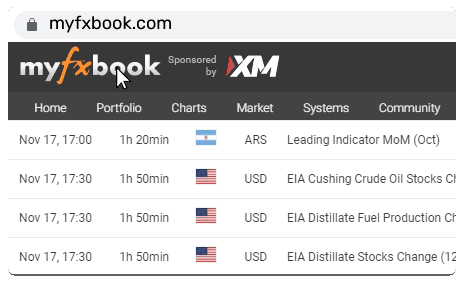Market cycles: leveraging seasonal trends with Octa Broker

Understanding the rhythm of financial markets can give traders a significant edge. Seasonalities—lasting trends that repeat themselves during some periods of the year—tend to influence the value of assets and the overall market state. Identifying these cycles allows traders to adapt their strategies better and make more informed decisions.
H2: Understanding seasonal patterns
Seasonality in the financial markets refers to anticipated fluctuations which recur annually, influencing asset prices and market behaviour. Several phenomena well documented outline this phenomenon:
H3: ‘Sell in May and go away’
The stock market typically performs poorly between May and October compared to the November-to-April period. Historically, individuals who reduced equity exposure in May and returned in November normally experienced better returns. However, it is important to remember that market tendencies may change even though this pattern has been observed.
H3: The January effect
The January Effect is a situation where the prices of stocks, particularly small-cap stocks, rise more during January than any other month. This often happens due to investors selling shares in December for tax-loss harvesting and subsequent reinvestment in January, which results in higher demand and, therefore, higher prices. Although the effect has weakened over recent years, it remains a topic of interest for traders.
H3: Santa Claus rally
This phenomenon indicates the rise in stock prices during the last five trading days of December and the first two of January. While the causes are unsure, holiday-season optimism and institutional investors closing out their books may be reasons behind this rally. A lack of a Santa Claus Rally activity can occasionally predict a bearish future for the upcoming year.
H3: Commodity seasons
Seasonal trends also occur in commodity markets. Oil prices, for instance, rise ahead of increased usage during the summer driving season as refineries produce more prior to increased usage. Prices then fall in September as usage decreases. Similarly, farm commodities like wheat and corn experience seasonal price trends because of planting and harvesting patterns.
H2: Recent observations in late 2024 and early 2025
In late 2024, the traditional Santa Claus Rally did not occur. The S&P 500 experienced a 0.2% decline over this period, marking a departure from the typical year-end uplift. This absence raised concerns among investors about potential market softness heading into 2025.
The January Effect appeared subdued in early 2025. Small-cap stocks, which traditionally benefit from this phenomenon, showed modest gains. The SPDR Portfolio S&P 600 Small Cap ETF (SPSM) recorded a 9.8% increase over the past year as of 6 January 2025, compared to the SPDR S&P 500 ETF Trust's (SPY) 25.4% gain, indicating a lag in small-cap performance.
H2: Applying seasonal patterns in trading
H3: Developing strategies based on a variety of factors
Basing trading on seasonal trends involves analysing past results to identify recurring patterns. However, one must pair this tactic with other types of analysis so that irregularities and extraneous factors are considered. For example, seasonal patterns can be blended with technical signals to determine the best entry and exit points. If a trader observes a seasonal pattern in a commodity to rise and a related buy signal from a technical indicator like a Moving Average crossover, this convergence can support the rationale of the trade.
H3: Applying risk management
While seasonality trends are helpful, they are not always accurate. The market may change the bullish or bearish trajectory because of fundamental factors. ‘For example, in 2018, there was no Santa Claus Rally. In December 2018, the S&P 500 fell by nearly 10%, marking one of the worst Decembers since the Great Depression. This was due to fears of a global economic slowdown and rising trade tariffs.’ — adds Kar Yong Ang, financial market analyst at Octa Broker. In such cases, risk management involves conducting a thorough analysis and applying moderate position sizes and tools like stop-loss orders.
H3: Seasonality analysis platforms
Dedicated websites like Seasonsax can provide traders with detailed analysis of seasonal patterns and trends, enhancing their analysis and decision-making. For example, Seasonsax studies historical data to identify recurring trends and anomalies that may affect asset value.
Conclusion
Seasonal trends can offer traders an advanced insight into market dynamics if comprehended and factored into trade strategies. Traders make more informed choices by combining historical insights with technical analysis and sound risk management. One must continue to learn and be responsive because market conditions continually evolve. Staying current is the key to maintaining a competitive edge.
Disclaimer: Trading involves risks and may not be suitable for all investors. Use your expertise wisely and evaluate all associated risks before making an investment decision.
Octa is an international broker that has been providing online trading services worldwide since 2011. It offers commission-free access to financial markets and various services used by clients from 180 countries who have opened more than 52 million trading accounts. To help its clients reach their investment goals, Octa offers free educational webinars, articles, and analytical tools. The company is involved in a comprehensive network of charitable and humanitarian initiatives, including the improvement of educational infrastructure and short-notice relief projects supporting local communities. Since its foundation, Octa has won more than 100 awards, including the 'Most Reliable Broker Global 2024' award from Global Forex Awards and the 'Best Mobile Trading Platform 2024' award from Global Brand Magazine.












